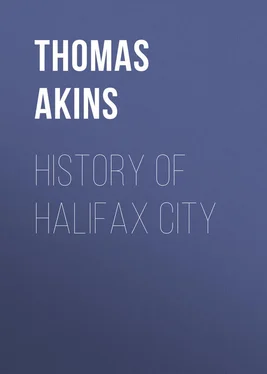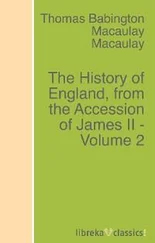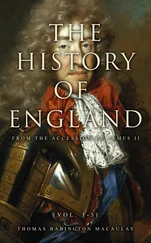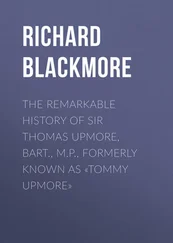Thomas Akins - History of Halifax City
Здесь есть возможность читать онлайн «Thomas Akins - History of Halifax City» — ознакомительный отрывок электронной книги совершенно бесплатно, а после прочтения отрывка купить полную версию. В некоторых случаях можно слушать аудио, скачать через торрент в формате fb2 и присутствует краткое содержание. Жанр: foreign_antique, foreign_prose, Историческая проза, на английском языке. Описание произведения, (предисловие) а так же отзывы посетителей доступны на портале библиотеки ЛибКат.
- Название:History of Halifax City
- Автор:
- Жанр:
- Год:неизвестен
- ISBN:нет данных
- Рейтинг книги:3 / 5. Голосов: 1
-
Избранное:Добавить в избранное
- Отзывы:
-
Ваша оценка:
- 60
- 1
- 2
- 3
- 4
- 5
History of Halifax City: краткое содержание, описание и аннотация
Предлагаем к чтению аннотацию, описание, краткое содержание или предисловие (зависит от того, что написал сам автор книги «History of Halifax City»). Если вы не нашли необходимую информацию о книге — напишите в комментариях, мы постараемся отыскать её.
History of Halifax City — читать онлайн ознакомительный отрывок
Ниже представлен текст книги, разбитый по страницам. Система сохранения места последней прочитанной страницы, позволяет с удобством читать онлайн бесплатно книгу «History of Halifax City», без необходимости каждый раз заново искать на чём Вы остановились. Поставьте закладку, и сможете в любой момент перейти на страницу, на которой закончили чтение.
Интервал:
Закладка:
About this time a destructive epidemic made its appearance in the town, and it is said nearly 1000 persons fell victims during the autumn and the following winter. On the 14th day of October, the Government found it necessary to publish an ordinance, commanding all Justices of the Peace, upon the death of the settlers, to name so many of the neighbourhood or quarter (not exceeding 12) to which the deceased belonged, to attend at the burial and carry the corpse to the grave, and whoever refused to attend without sufficient reason should have his name struck off the Mess Book and Register of Settlers as unworthy of His Majesty's bounty; again in December, another order was made commanding all householders to report their dead to a clergyman within twenty-four hours.
Owing to the frequent alarms of invasion from the Indians and French stragglers during the winter, it was resolved in Council to organize a militia force for the protection of the settlement, and on the Sunday following the 6th day of December, after divine service, all the male settlers, between the age of sixteen and sixty, were assembled on the parade, and drawn up in the following order: – "Those of Mr. Ewer's and Mr. Collier's divisions to face the harbor, those of the quarters of Mr. Galland and Mr. Foreman to face the Citadel, and those of Mr. Callendar's division at one end of the parade." The proclamation bears date the 7th day of December, 1749. On the 16th, information arrived that a French force had been dispatched overland from Canada, to attack Halifax, and that the Indians were to co-operate with them, also, that two vessels with six hundred men were in the Bay Verte under LeCorne, and with ammunition and stores of all kinds for a winter expedition. The people having been again assembled on the parade after divine service, the proclamation was read and the settlers commanded to fell all the trees around the town without the forts and barricades. No attempt was, however, made upon the town, either by the Indians or French during the winter. These hostilities were being carried on by the Government of Canada, while the two Crowns were nominally at peace, under pretence that the Treaty of Utrecht only ceded to the Crown of Great Britain the peninsula of Nova Scotia proper.
The Governor deeming it expedient that some permanent system of judicial proceedings to answer the immediate exigencies of the Colony should be established, a committee of Council was accordingly appointed to examine the various systems in force in the old Colonies. On 13th December, Mr. Green reported that after a careful investigation, the laws of Virginia were found to be most applicable to the present situation of the province. The report was adopted. It referred principally to the judicial proceedings in the General Courts, the County Courts, and other tribunals.
Before concluding this chapter, which comprehends all that can be collected relative to the affairs of the settlement during the first year of its existence, it will be proper to observe that in founding the City, the spiritual wants of the settlers were not lost sight of by the British Government. Preparatory to the embarkation of the settlers, a letter was addressed by the Lords of Trade and Plantations to the Society for the Propagation of the Gospel in Foreign Parts, dated Whitehall, April 6th, 1749, recommending to the Society to appoint ministers and school-masters for the new settlement at Chebucto, and for such other townships or settlements as should from time to time be formed in Nova Scotia, and requesting the Society to make some provisions for them until arrangements should be made for their sufficient support, by grants of land, etc. 20 20 A copy of this letter will be found in the appendix .
The Society resolved immediately to act on this recommendation, and undertook to send six clergymen and six school-masters, when the settlements should be formed. The first missionaries appointed under this arrangement, were the Rev. William Tutty, of Emmanuel College, Cambridge, and the Rev. Mr. Anwell, who both came out with the settlers in June, 1749. Mr. Tutty officiated in the open air until the necessary church accommodation could be obtained. On laying out the town, a spot was assigned by Government for the church. The site was first selected at the north end of the Grand Parade, where Dalhousie College now stands, but it was changed immediately after for the present site of St. Paul's Church, which was erected at the expense of Government and ready for the reception of the missionary, who preached his first sermon there on the 2nd day of September, 1750. The pews and inside finish were not completed for several years after. The name of Mr. Tutty does not appear among those of the settlers who came with Cornwallis. He probably, however, accompanied him. Mr. Anwell came with the expedition, but his name does not again appear; he died shortly after his arrival. Mr. Tutty spoke German and administered the Lord's Supper to the German settlers in their own language. The other missionary, J. Baptiste Moreau, who came out as school-master, and afterwards went to England for ordination, returned to the settlement and went down to Maligash with the Germans, 1752. Mr. Halstead was the school-master in charge of the Society's schools at Halifax during the first two or three years.
Governor Cornwallis in 1749, assigned the lot at the south-west corner of Prince and Hollis streets for a Protestant Dissenting Meeting house. The old building known as Mather's, or as it was afterwards called St. Matthew's Church (destroyed by fire in 1859,) was soon after erected on this site. It was appropriated originally to the Congregationalists, many of whom came from New England to settle in Halifax. It was called Mather's Church after the celebrated Cotton Mather, one of the leading divines of that denomination at Boston, in early days. The Presbyterians, and all who did not belong to the Established Church, attended divine service in this building. The Rev. Mr. Cleveland, who came from one of the old colonies, was the first minister who officiated in this building. It afterwards fell into the hands of the Presbyterians and became the property of the Church of Scotland, and the name of Mather's was changed to that of St. Matthew. This old Church was destroyed by fire, which consumed a large portion of the buildings in Hollis Street, in 1859. The lot of ground on which it stood was afterwards sold to Mr. Doull, who erected the fine stone store thereon, now known as Doull and Miller's building.
CHAPTER II
The winter of 1749-50, as has been before mentioned, was spent in continual apprehension of Indian and French invasion, and in preparations to receive the enemy. On the 7th January, 1750, a number of the inhabitants petitioned that Martial Law should be declared, but the Governor and Council did not consider the danger so great or imminent as to make it necessary. However, stringent regulations with regard to the militia were enacted, and an ordinance was issued compelling all settlers able to bear arms between 16 and 60, to be formed into 10 companies of 70 men each, 21 21 The Artificers formed one company by themselves, and the whole militia amounted to about 840 men. The Officers behaved well, but, says the Governor in his dispatch, "I cannot say so of the men."
and a guard of – officers and 30 men to assemble every evening near the parade to keep guard until sunrise, and all militia men called upon to labour at the fortifications, were to be allowed 1s. per day. Labourers were constantly employed in raising a barricade and continuing it to the water side, and block houses were erected between the forts.
During the winter intelligence frequently arrived from Minas, Pisiquid, and the eastern shore, of attacks being made by the Indians upon stragglers, and several young Acadians were brought from Minas to Halifax for trial, having been found in arms with the Indians. A large reward was offered for the apprehension of LeLoutre, the Indian missionary, and also £10 sterling for every Indian scalp or Indian prisoner. Capt. Sylvanus Cobb, an active and bold sea captain from Massachusetts, was taken into Government employ, and sent to Chignecto with his armed sloop for the purpose of surprising LeLoutre and his gang, and afterwards to search the harbors along the coast for Indians, and bring with him all he captured as prisoners to Halifax. Troops under Capt. Bartilo and others were sent into the interior and other active proceedings taken by the Governor and Council during the months of January and February for the peace of the province. A courier having been stopped at Cobequid, Priest Gourard and the French Deputies, were all brought to Halifax, by Capt. Bartilo, for examination before the Governor and Council; Gourard was detained at Government House until the courier returned, but the deputies were dismissed. He disclosed the fact to the Council that the Mic-Mac Indians of Nova Scotia went every year to Quebec, to receive clothing from the French Government, and that LeCorn had made the French of Acadia take the Oath of Allegiance to the French King. Gourard on this occasion took the Oath of Allegiance to the Crown of Great Britain, and thereupon received a licence to officiate as Priest to the Acadians, and promised not to leave the province without special leave from the Governor.
Читать дальшеИнтервал:
Закладка:
Похожие книги на «History of Halifax City»
Представляем Вашему вниманию похожие книги на «History of Halifax City» списком для выбора. Мы отобрали схожую по названию и смыслу литературу в надежде предоставить читателям больше вариантов отыскать новые, интересные, ещё непрочитанные произведения.
Обсуждение, отзывы о книге «History of Halifax City» и просто собственные мнения читателей. Оставьте ваши комментарии, напишите, что Вы думаете о произведении, его смысле или главных героях. Укажите что конкретно понравилось, а что нет, и почему Вы так считаете.












